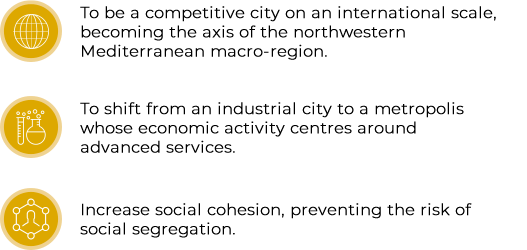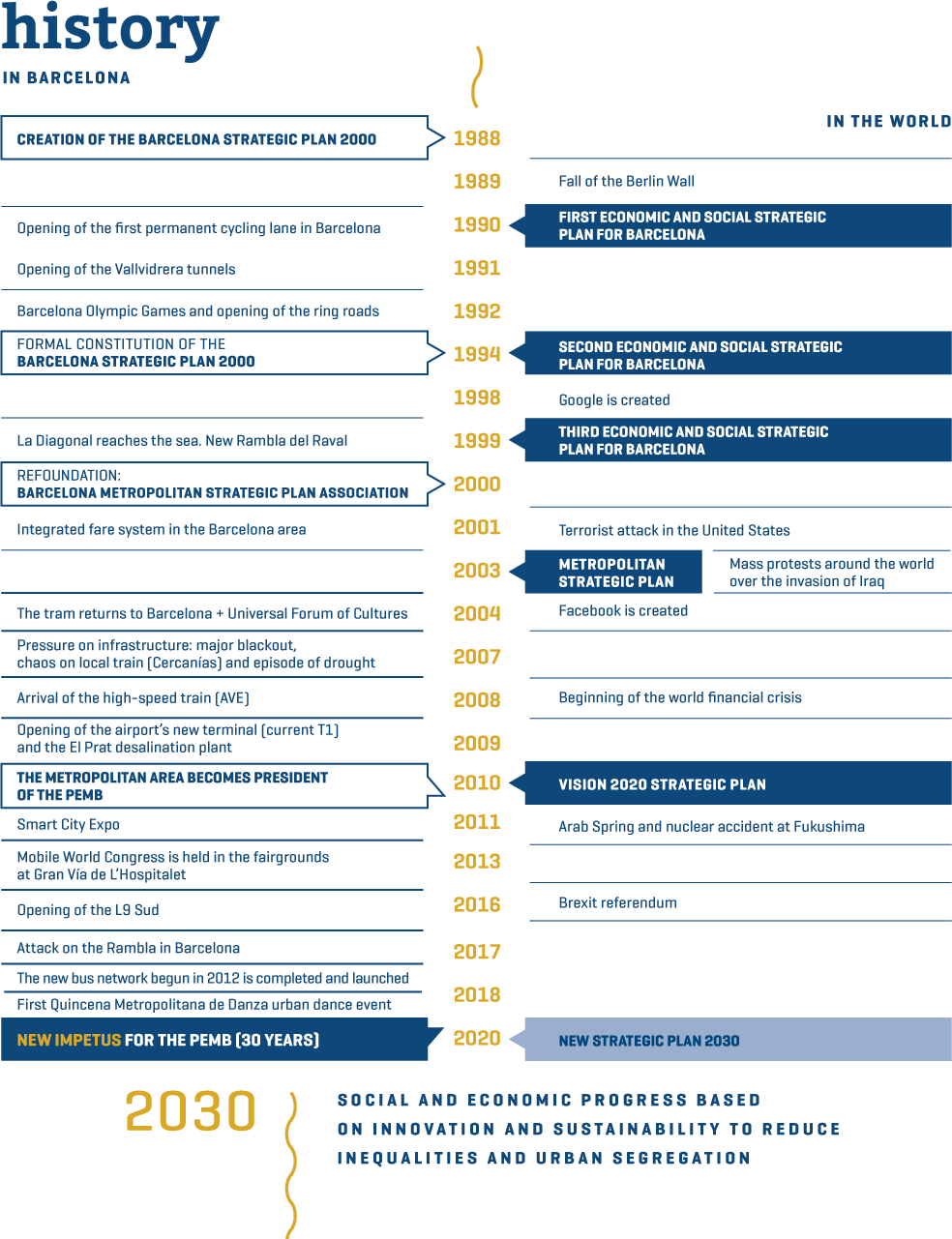30 years of plan
The Barcelona Metropolitan Strategic Plan (PEMB) began 30 years ago in a Barcelona that had just undergone a long decade of industrial crisis leading to chronic social imbalances. The crisis of the 1970s also proved that the city's economic model, based on the manufacturing industry, had reached its limit and that a change in economic activity was in order. This all occurred amidst the restoration of self-government in Catalonia, the development of the welfare state in Spain and Spain's entry into the European Union.
In June 1987, Pasqual Maragall was re-elected mayor of Barcelona for a third term. Having won the nomination for the 1992 Olympic Games months before, it was time to consider the need for a strategic plan for the city's economy. What was new and original about this process was its inclusion of the social sphere, surpassing strictly economic and business considerations, and doing so jointly and in agreement with the city's major financial and social institutions. Therefore, the plan had a clear metropolitan focus at a time when the idea of a metropolitan city had faded since the suppression of the Metropolitan Corporation of Barcelona (CMB).
The objectives targeted by the plan for 2000 were:

A large part of these objectives resulted in enhancements to the city's infrastructure, such as the expansion of El Prat airport, the completion of the ring roads and the construction of the Torre de Collserola tower.
The metropolitan dimension of the plan became increasingly important. By 2000, it was clearly necessary to embrace the metropolitan rather than strictly the municipal area, leading to the inception of the Barcelona Metropolitan Strategic Plan. Three decades later, the PEMB's vision encompasses the entire metropolitan region, but maintains the same philosophy: the active participation of all the actors concerned, making agreement possible between divergent interests and ensuring that decisions are prioritised and leadership shared.



